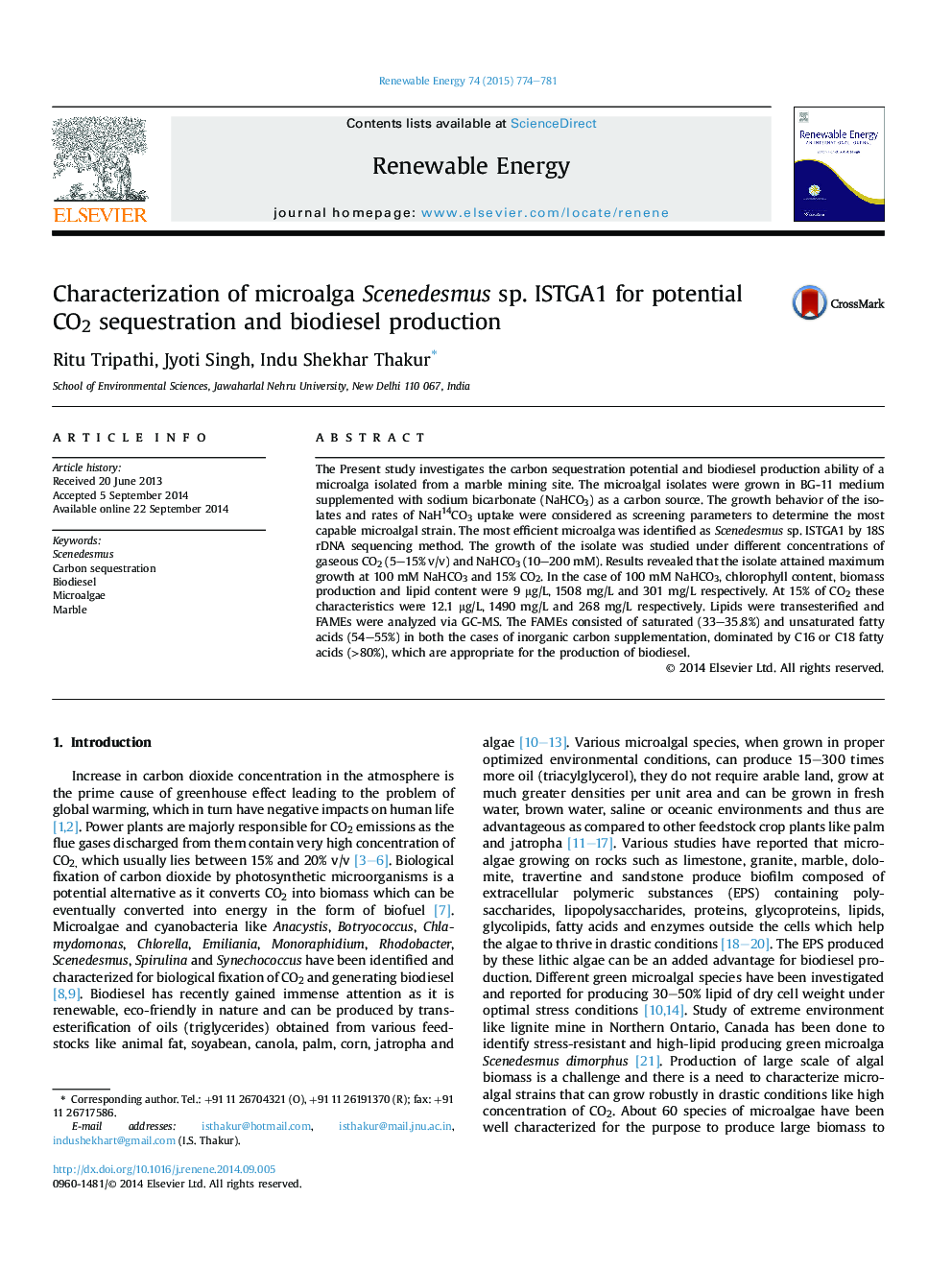| Article ID | Journal | Published Year | Pages | File Type |
|---|---|---|---|---|
| 300030 | Renewable Energy | 2015 | 8 Pages |
•Microalga Scenedesmus sp. ISTGA1 was isolated from marble rock.•Isolate ISTGA1 grew well under high NaHCO3 and CO2 concentrations.•Increased biomass productivity and lipid production in presence of high inorganic C.•Strain ISTGA1 showed a suitable fatty acid profile for biodiesel production.•The isolate exhibited a potential for CO2 sequestration and biodiesel production.
The Present study investigates the carbon sequestration potential and biodiesel production ability of a microalga isolated from a marble mining site. The microalgal isolates were grown in BG-11 medium supplemented with sodium bicarbonate (NaHCO3) as a carbon source. The growth behavior of the isolates and rates of NaH14CO3 uptake were considered as screening parameters to determine the most capable microalgal strain. The most efficient microalga was identified as Scenedesmus sp. ISTGA1 by 18S rDNA sequencing method. The growth of the isolate was studied under different concentrations of gaseous CO2 (5–15% v/v) and NaHCO3 (10–200 mM). Results revealed that the isolate attained maximum growth at 100 mM NaHCO3 and 15% CO2. In the case of 100 mM NaHCO3, chlorophyll content, biomass production and lipid content were 9 μg/L, 1508 mg/L and 301 mg/L respectively. At 15% of CO2 these characteristics were 12.1 μg/L, 1490 mg/L and 268 mg/L respectively. Lipids were transesterified and FAMEs were analyzed via GC-MS. The FAMEs consisted of saturated (33–35.8%) and unsaturated fatty acids (54–55%) in both the cases of inorganic carbon supplementation, dominated by C16 or C18 fatty acids (>80%), which are appropriate for the production of biodiesel.
